
Tam Dao National Park, Vinh Phuc Vietnam
December 12-14, 2019 Callyn Yorke
Thao and I left our hotel in the Old Quarter of Hanoi at 8 am. About 1.5 hours later we arrived at the hill station of Tam Dao, at an elevation of about 1,000 meters above sea level, 80 km northwest of Hanoi. The drive was fairly straight forward on the relatively new, four-lane Hanoi – Lao Cai Highway. The only problem we encountered was at a traffic checkpoint near the Tam Dao park entrance. We were flagged down by two uniformed policemen standing on the side of the road, one of whom had used a cell phone to video-record a minor moving violation, presumably an unsafe lane change, made by our young Vietnamese driver. Following a lively, fifteen minute discussion, the matter was settled and we continued on our way up a winding mountain road to the town of Tam Dao.

We located the Green World Hotel on a high perimeter road and checked into a fifth-floor room (#516) with a small, sunny balcony overlooking the city. The hotel was recommended in an internet review for being birder-friendly and a convenient location for exploring the adjacent forest. It soon became clear the review was out of date and incomplete. We stepped into a stainless steel elevator with the cool atmosphere of a meat locker. The hallway outside our room was cold, dark, damp and empty, as was the entire hotel. In fact, the hotel manager was nowhere to be found when we arrived. The place looked as though it would have been perfect for a low budget horror film. Eventually, everything was sorted out regarding payment (cash only at check-out) and other details, e.g. a small chair and electric outlet converter for our room. No food was available at the hotel. The manager soon disappeared and was not seen again for two days. A barking dog was chained to a wall of an abandoned kitchen. Redemption was a low room rate: $750,000 VND ($32 US) per night, about half of what we were paying for accommodation in Hanoi.


After hanging out a couple of musty blankets on the balcony, we embarked on a stroll around the town, beginning with an elevator trip to the top viewing deck of the hotel. There we were greeted by two dogs, one friendly, white Husky-type, the other a suspicious, growling, Thylacine-type. Two bamboo bird cages were suspended above eye-level from a rafter; one with a Chinese White-eye (Zosterops simplex) and the other with a Chestnut-flanked White-eye (Zosterops erythropleurus). A view of the town we had hoped for was absent; the top of the hotel was largely walled in. We returned to the hotel lobby, eagerly accompanied by Husky who had evidently become quite accustomed to commuting on the elevator. Outside the hotel, three more bird cages were on the sidewalk, all containing local species we never found during our visit to Tam Dao: White-rumped Shama (Kittacincla malabarica) and Gray Laughingthrush (Garrulax maesi).

We walked along a quiet section of the perimeter road bordering a lower-montane, broad-leaved evergreen forest. There were a couple of small, overgrown trails leading steeply uphill from the roadside; one of those trails looked like a good birding site, then suddenly produced a hunter sporting a scoped .22 rifle and a game bag.
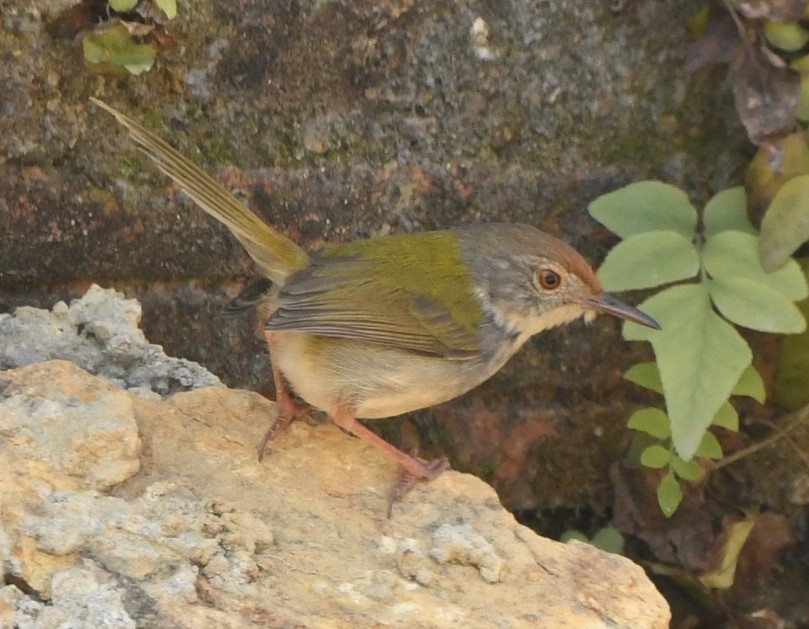
We kept walking on the road in a northwest direction, eventually reaching a sharp bend and road cut without much suitable habitat for birds. A Common Tailorbird appeared in an isolated patch of weedy vegetation sprouting from the ruins of an old French garrison. Just about then, rifle shots rang out in the forest. That was our signal to head for cover downtown. And what a strange little town we had stumbled into.
Nearly every building in Tam Dao City was either a hotel (several under construction) or a cafe-restaurant. We could find little sign of what would ordinarily be expected in any Vietnamese village, town or city, e.g. produce market, pharmacy, hardware store, school, government office, etc..
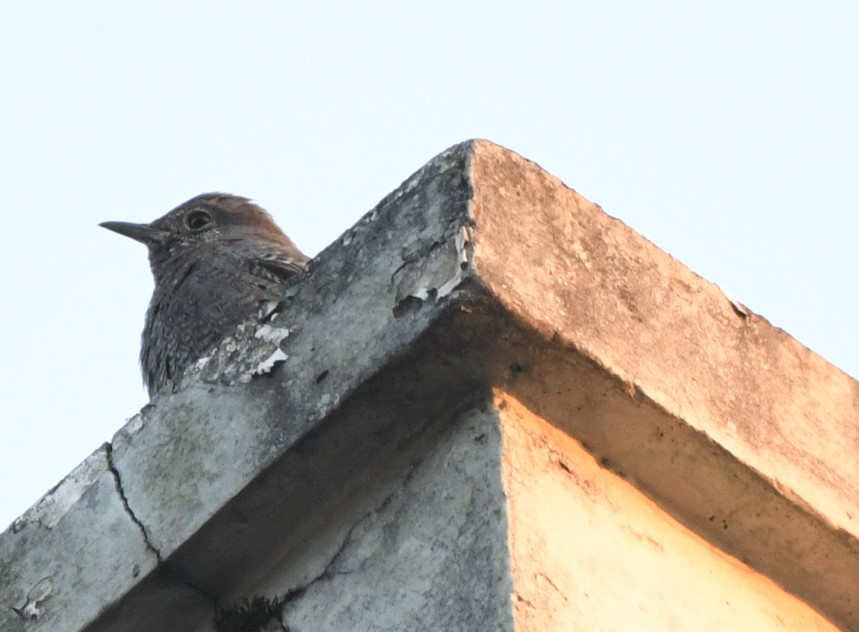
The place wasn’t entirely without charm, however. Our first evening stroll on the high perimeter road, provided a sublime, misty sunset enveloping the sleepy little town below. Crumbling rock walls, vegetable gardens and terraces, remnants of an early 20th Century French colonial settlement, unceremoniously burned to the ground by Vietnamese revolutionaries following WW II, added an intriguing historical texture to the landscape.
Stone walls and roof-tops attracted Blue Rock Thrush, Gray-backed Shrike and Japanese Stonechat. An extraordinarily large flock of at least twenty Gray Wagtail, flushed from a cauliflower garden, landed like a squadron of helicopters on a tiled roof top.
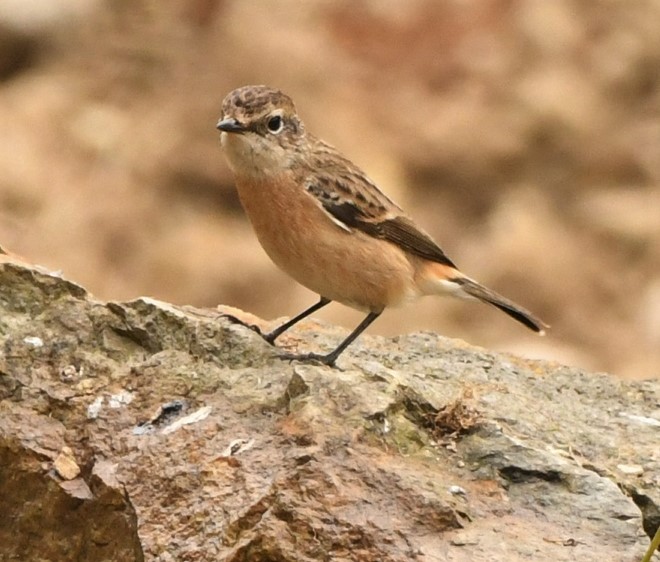
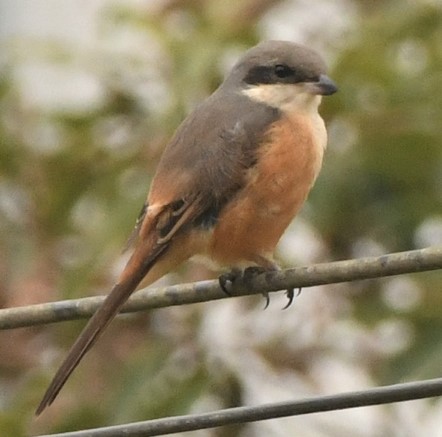
Downtown, a beautifully reconstructed Catholic church, showcasing an authentic, European aspect of local architecture, which I suppose could be broadly categorized as an admixture of Asian Art Deco and French Colonial.
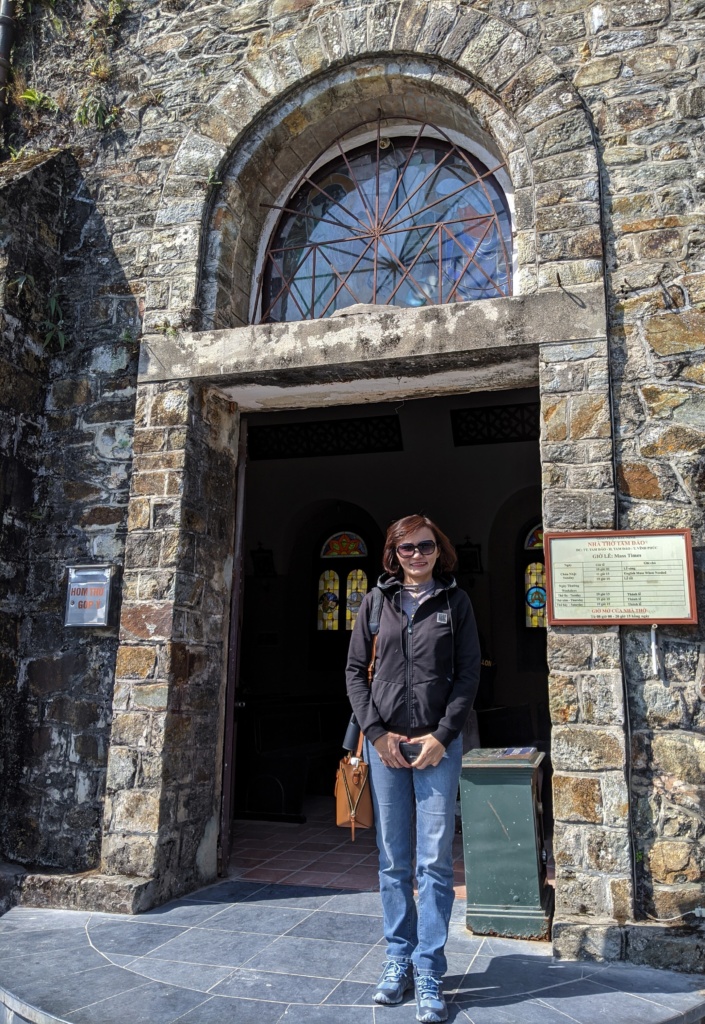
Tam Dao City remains today as it was historically, a holiday getaway destination, frequented mostly by wealthy folks and wedding parties from Hanoi; everyone enjoying a stylish relief from the heat and humidity of the lowlands.
The weather in Tam Dao during the day was pleasant, mostly sunny and cool (9 to 13 C) with little wind — ideal for birding. We spent the second day venturing a little further around the upper margins of Tam Dao City, again on the perimeter road (see map inset above). The previous evening we had met two American birders with a Vietnamese guide, who mentioned a temple trail where they found Gray Laughingthrush. But there were two parallel stairway trails diverging from a series of food stalls; they hadn’t mentioned which one of them the birds were found on. We were, of course most interested to find Gray Laughingthrush, which is generally scarce in northern Vietnam. But a hike directly to the temple the following morning failed to produce any sign of that bird. Instead, we found a highly vocal, mixed-species flock containing Japanese Tit (Parus minor) and Chinese White-eye (Zosterops simplex). That same evening, I found the other (pipeline) stairway at the fork (the entrance partly concealed by a food stall), which traversed much better quality forest and more birds than the one leading directly to the temple (photo). In the fading light, two species crossed the pathway, Tonkin Streaked Wren-babbler (Turdinus stevensi) and Siberian Thrush (Geokichla sibirica), the former a life bird. But even so, I did not see or hear any laughingthrushes anywhere in the forest.

We continued walking northward on the perimeter road until stopped by a locked gate and a guard shack. Thao asked the caretaker if we might be allowed to bird the road. No deal. For no apparent reason the road would remain closed to the public for another year or so. The news was disappointing because the healthiest, least disturbed and most accessible forest in the area, appeared to be exactly along that stretch of the perimeter road.
TAM DAO NATIONAL PARK HEADQUARTERS – December 14, 2019
After checking out of the Green World Hotel, our driver took us directly to the Tam Dao National Park headquarters, located a few kilometers down the road from Tam Dao City. There was a small problem, however. The park headquarters was closed for a parking lot repaving project. Luckily, Thao convinced one of the park officials to allow us access to the birding trail behind the station. We set off on foot and soon found a pathway paralleling a stream which was largely concealed by a riparian woodland. Bird life along this route was abundant and afforded fairly close viewing. In fact, we found more birds in the first twenty minutes on this path than during our two days of birding Tam Dao City. Best of all, most of the birds were new for our trip list. Evidently, the juxtaposition of three ecological communities, pine woodland, lower montane broad-leaved forest and stream side (riparian) woodland at this elevation (about 300 meters below Tam Dao City) supported a great variety of birds. Additionally, the birds around the park headquarters appeared relatively habituated to human presence, doubtless resulting from an enforced hunting taboo.

We continued walking slowly on the trail, which eventually intersected the stream with a small bridge. A fenced-in park exhibit was nearby but appeared to be closed.
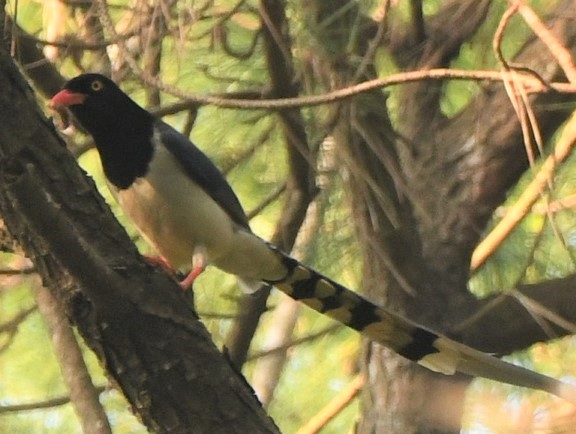
Birds were very active at this junction, diving in and out of tall grass and flowering shrubs, moving in vocal, mixed species flocks through trees overhanging the stream. We could have easily spent the remainder of daylight hours birding this highly productive spot. But we were then about a twenty minute walk from park headquarters and on a tight schedule for the return trip to Hanoi.
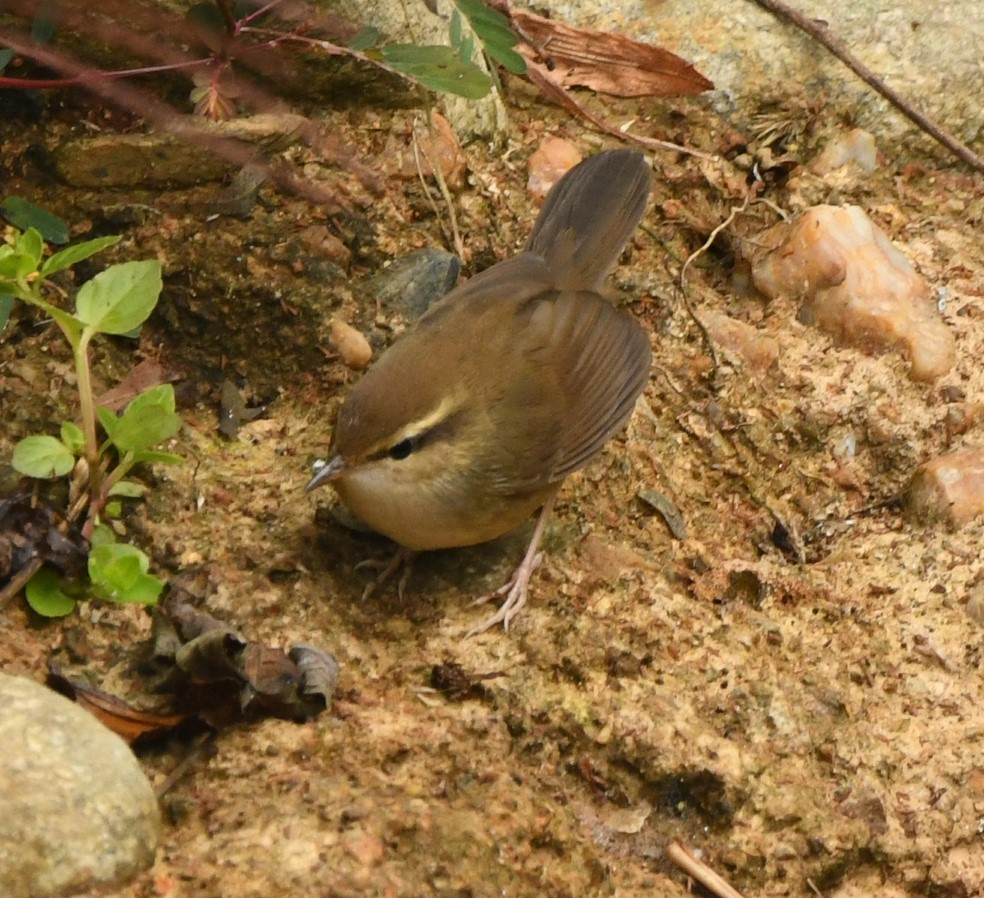
Reluctantly, we began making our way back to the park entrance. By the time we arrived, our tally had reached eighteen species, seventeen of which were new for our Tam Dao bird list (see below). Highlights included, a small flock of stunning Red-billed Blue Magpie (Urocissa erythrorhyncha) and a Brownish-fanked Bush-warbler (Horornis fortipes), lifers for both Thao and I.
When we reached the park headquarters, a fresh layer of asphalt had been spread over the parking lot. We scampered around it as daintily as possible and began searching for our car and driver. A few minutes later we were reunited and on our way back to Hanoi. The short visit to Tam Dao had been a bit of an adventure for us, in that we really had little idea what to expect of transportation, accommodation, food, and birding opportunities. And there was one more surprise awaiting us before we reached the highway. Yep. Two police officers at the same roadside checkpoint, flagged down our vehicle. One of them was smiling with recognition. Our driver was in trouble again. Big trouble. Apparently, as Thao related to me during our return trip, he had been cited again for exactly the same moving violation. Only this time, due to the second offense, the fine was tripled and nonnegotiable, effectively eliminating any profit he might have taken from the job, which consisted of two round-trips between Hanoi and Tam Dao. Visibly upset by the shake-down, he nevertheless took us safely back to Hanoi. Thao and I agreed to reimburse the poor chap with a generous tip and put in a good word for him with the hotel management. All is well that ends well.
ANNOTATED BIRD LIST OF TAM DAO
December 12-14, 2009 Callyn Yorke
KEY
Numbers following each species represent the maximum number of individuals observed during any single survey; Age and Sex (when known): Adult = ad; Immature = imm; Male = m; Female = fem; Locations: Tam Dao City, including city gardens, vacant lots (TDC); Upper perimeter road and adjacent forest (PR); Stairway pipeline trail (SPT); Temple, including stairway and adjacent forest (TSF); Tam Dao National Park Headquarters, including stream side trail (PHQ).
Systematics and nomenclature largely follows Birdlife International, Checklist of Birds of the World (2018).
- Green-billed Malkoa (Phaenicophaeus tristis) 1 climbing from the middle level of broad-leaved trees into the canopy of an adjacent pine, PHQ.
- Speckled Piculet (Picumnus innominatus) 1 foraging on main limbs in a young deciduous tree, PHQ.
- White-bellied Erpornis (Erpornis zantholeuca) in mixed species flock with WTFA and GHCF, lower to mid-level in riparian woodland, PHQ.
- White-throated Fantail (Rhipidura albicollis) 4 vocal, in mixed species flock, riparian woodland, PHQ.
- Gray-backed Shrike (Lanius tephronotus) 2 on conspicuous perches above vacant lots, TDC, PR (photo – see text intro.).
- Red-billed Blue magpie (Urocissa erythrorhyncha) 3 – 5 gregarious, vocal in middle to upper level of pine woodland, PHQ (photo – see text intro.).
- Gray-headed Canary Flycatcher (Culicicapa ceylonensis) 2 vocal, at edge riparian woodland and stream in a mixed species flock of WTFA, PTBU and YBWA, PHQ.
- Japanese Tit (Parus minor) 2 associated with Phylloscopus sp. in canopy of broad-leaved emergent tree, TSF.
- Rufescent Prinia (Prinia rufescens) 5 vocal, gregarious in streamside grass; a cohesive flock (ad, imm) moving to drier Melastoma shrubs at edge of trail, PHQ (photo).
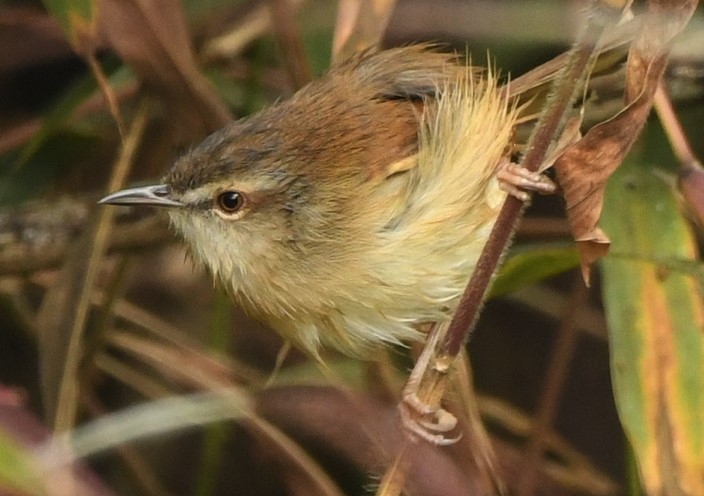
- Common Tailorbird (Orthotomus sutorius) 15 vocal, active in gardens and disturbed vegetation at forest edge, TDC, PR (photo – see text intro.); 1 streamside shrubs, PHQ.
- Puff-throated Bulbul (Alophoixus pallidus) 1 in mixed species flock, lower to middle level of riparian woods, PHQ (photo).
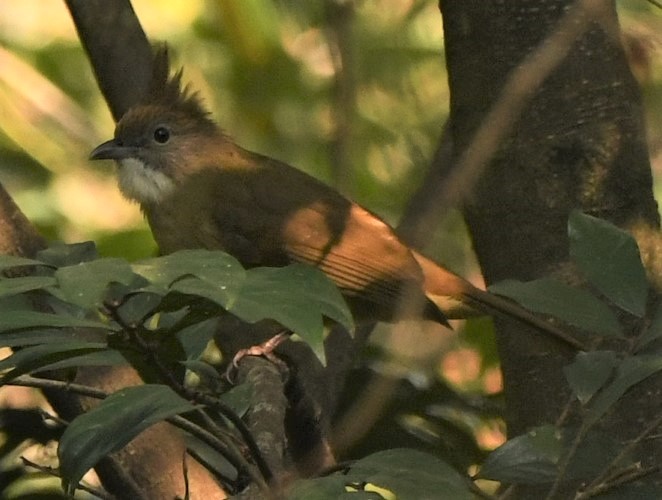
- Chestnut Bulbul (Hemixos castanonotus) 1 preening on horizontal branch of emergent broad-leaved tree in hill forest, PR.
- Black Bulbul (Hypsipetes leucocephalus) 8 (1 white- headed form) gregarious, vocal in broad-leaved hillside forest, PR.
- Yellow-browed Warbler (Phylloscopus inornatus) 2 very active, foraging in canopy and subcanopy of broad-leaved trees in mixed species flock, PHQ.
- Phylloscopus sp. c.f. proregulus 2 – tiny leaf warbler, very active in canopy of broad-leaved trees, PR, PHQ.
- Eastern Crowned Warbler (Phylloscopus coronatus) 1 ID relatively large size and rather slow-moving; active in canopy of pines, PHQ.
- White-tailed Leaf Warbler (Phylloscopus intensior) 1 in mixed species flock in canopy of a broad-leaved, stream side tree, PHQ.
- Brownish-flanked Bush-warbler (Horornis fortipes) 1 very active on ground at edge of stream, among rocks and wet vegetation, PHQ (photo – see text intro.).
- White-eye (Zosterops sp. c.f. simplex) 1 in msf with JATI in canopy of broad-leaved tree, TF.
- Pin-striped Tit-babbler (Mixornis gularis) 2 active on ground and lower to mid level of riparian woodland in mixed species flock, PHQ (photo).
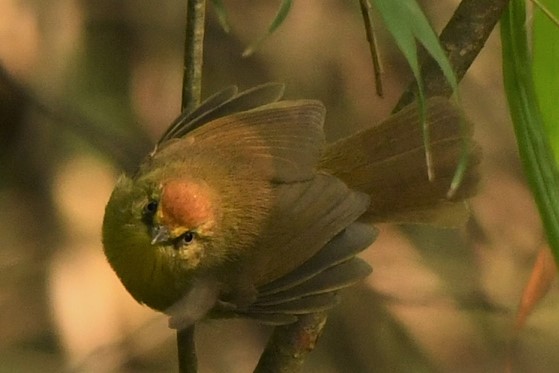
- Tonkin Streaked Wren-babbler (Turdinus stevensi) 2 a pair moving downhill together in a small drainage culvert, SPT.
- Siberian Thrush (Geokichla sibirica) 1-2 repeatedly vocal (calls) in forest understory; one fem flying to horizontal limb in subcanopy (evening roost?) SPT.
- Eastern Blue Rock Thrush (Monticola philippensis) 1 (fem) on roof top at sunset, PR (photo – see text intro.).
- Gray Bushchat (Saxicola ferreus) 2 (fem, imm) on utility wire, TDC, PR.
- Japanese Stonechat (Saxicola stejnegeri) 1 on rocks in vacant lot, TDC, PR (photo – see text intro.).
- Orange-flanked Bush-robin (Tarsiger cyanurus) 6 ( only 1 male found) individuals (fem) active on ground and in low to mid level of roadside shrubs, PR.
- Streaked Spiderhunter (Arachnothera magna) 2 vocal in broad-leaved trees at park headquarters, PHQ.
- Eurasian Tree Sparrow (Passer montanus) 40 (m,f) vocal, gregarious, ubiquitous, TDC.
- Gray Wagtail (Motacilla cinerea) 20 vocal (alarm calls when flushed), gregarious in gardens and open fields, tiled roof tops, TDC.